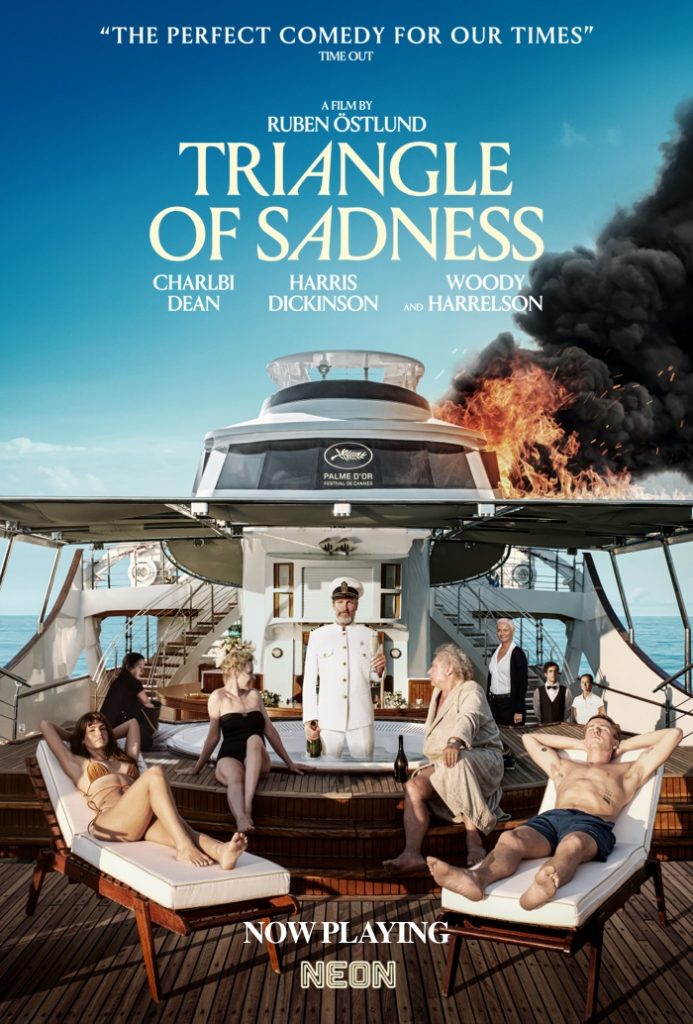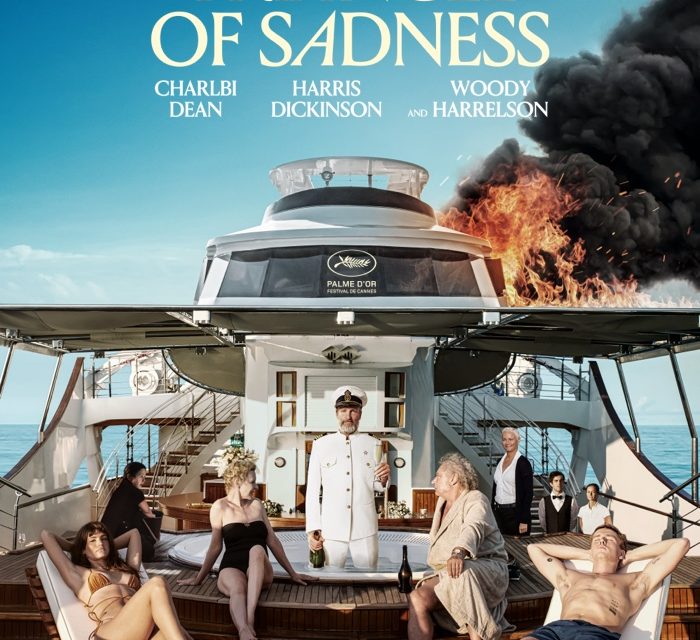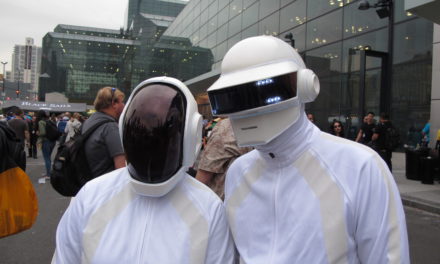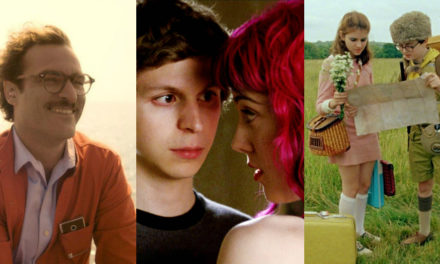“Triangle of Sadness” made me laugh, its performances were convincing, it was well-shot and its directing was precise. But there is still something holding me back from placing it right next to “Parasite” on the pedestal of great films that critique capitalism.
The story revolves around two models, Carl (Harris Dickinson) and his girlfriend Yaya (Charlbi Dean), although she is more of an Instagram influencer than a professional model. The film is told in three chapters. The first focuses on the couple’s relationship; the second takes place on a cruise ship that Yaya has been compensated with free admission to promote; the third part takes place somewhere I cannot disclose without spoiling large portions of the film. Through these three parts, director Ruben Östlund examines class structures, power dynamics and the flaws of capitalism.

Courtesy of Neon.
My principal gripe with “Triangle of Sadness” is that it’s too on the nose. There are points in the film that really feel like Östlund is hitting you over the head with the film’s message, one that is much less startling than he seems to realize. While it luckily never swoops to the lows of a film like “Don’t Look Up,” which was so literal that it somehow felt like I was contributing to climate change just by watching it, “Triangle of Sadness” definitely had moments that were painfully obvious. When Woody Harrelson is trading Karl Marx and Ronald Reagan quotes with a Russian oligarch as vomit and human feces surround them, it is hard to miss the point.
The film’s success is largely dependent on the individual viewer. For perhaps a younger crowd, who already know that Instagram influencers are silly and that capitalism is flawed, “Triangle of Sadness” probably won’t land how Östlund hoped. However, for another (perhaps older) audience, the film might offer real insight and present some startling realizations — which would certainly explain why the film won the Palme d’Or.
But all of that doesn’t mean that “Triangle of Sadness” is a bad movie; it’s actually a pretty good one. Some scenes were genuinely funny, like the moment from the opening seconds of the film’s trailer, in which we see a group of male models switch from their more serious modeling faces for fashion brands like Balenciaga to a more jovial stature for a brand like H&M. These humorous moments are placed throughout the film, and sometimes the humor just comes from the absurdities inherent in the situations the characters find themselves in. I found the film to be much more successful in these moments of comedy, rather than when it was taking itself so seriously.
Moreover, the film examines power and class structure, both on a broad scale and among the ultra-rich, more closely and thoroughly than some might expect. Particularly, the third part, which again I must be vague about, places the characters in an interesting interpersonal situation and then examines the social structure that begins to unfold.
Östlund is a gifted filmmaker. Not every director is able to make the viewer feel exactly what they want, but Östlund is. “Triangle of Sadness” made me stressed, relieved and even nauseous.
“Triangle of Sadness” is not a bad movie, and it presents some compelling ideas, even if they are less sophisticated than Östlund had intended. You might not enjoy it — I don’t even think I would say I “enjoyed” it — but “Triangle of Sadness” is worth seeing for the ideas it forces the viewer to think about.
Daniel Rosen (he/him) is from Atlanta, Georgia, majoring in film and media. He is part of Emory's improv comedy troupe, Rathskellar. Rosen spends his free time hoping the Atlanta Hawks will finally be good this year, playing tennis and trying to watch every movie.






